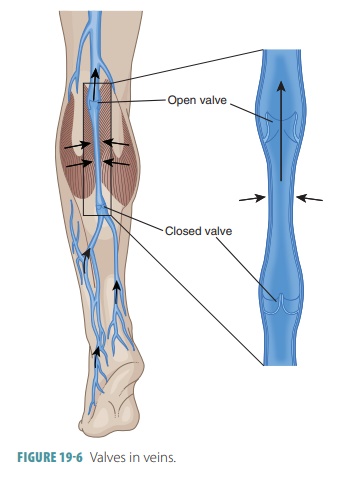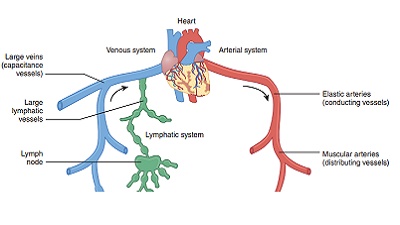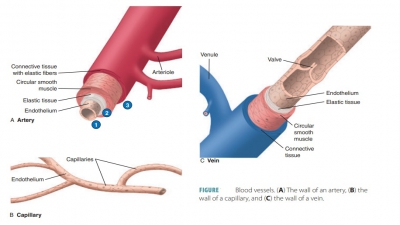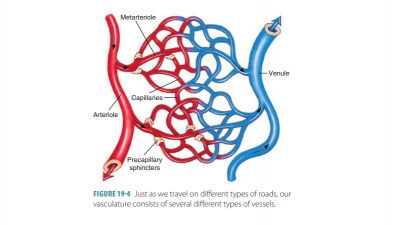Venous System
| Home | | Anatomy and Physiology | | Anatomy and Physiology Health Education (APHE) |Chapter: Anatomy and Physiology for Health Professionals: Vascular System
Venules are microscopic vessels that link capillaries to veins, which carry blood back to the atria.
Venous
System
Venules are
microscopic vessels that link capillaries to
veins, which carry blood back to the atria. Vein walls aresimilar but not
identical to arteries but have poorly devel-oped middle layers. Because they
have thinner walls and are less elastic than arteries, their lumens have a
greater diameter. Veins contain more fibrous tissue than arteries, and most
veins in the extremities have valves.
Venules
The capillaries join to form venules. These vessels range
between 8 and 100 μm in diameter, with the smallest or postcapillary venules made up only of endothelium, surrounded by pericytes or contractilecells. The larger venules have a thin tunica externa andone
to two layers of smooth muscle cells making up their tunica media. Venules
combine to form veins.
Veins
Many veins have flap-like valves projecting inward from
their linings. These valves often have two structures that close if blood
begins to back up in the vein. They aid in returning blood to the heart,
opening if blood flow is toward the heart and closing if it reverses.
Veins mostly have three tunics, but these have thin-ner
walls and larger lumens then the arteries to which they correspond. In a vein
the tunica media has little smooth muscle or elastin. Even in larger veins the
tunica media is relatively thin, with the heaviest wall layer being the tunica
externa. As a result, veins can contain large amounts of blood. They are also
called blood reser-voirs andcapacitance vessels. Veins can hold
nearly 65%of the blood supply of the body at any given moment but are usually
only partially filled (FIGURE
19-5). Veins are usually in no danger of bursting
because their blood pressure is relatively low. Veins have specialized
struc-tures that help them to return blood to the heart at the same rate it was
pumped into the circulation via the arteries. These structures include their
larger lumens, through which blood passes with little resistance.
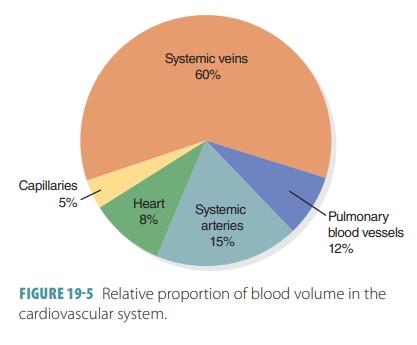
Veins also act as reservoirs for blood in certain
conditions, such as during arterial hemorrhage. Resulting venous constrictions
help to maintain blood pressure by returning more blood to the heart, ensuring
an almost normal blood flow even when up to one-fourth of the blood volume is
lost. TABLE 19-1
summarizes the blood vessel characteristics.
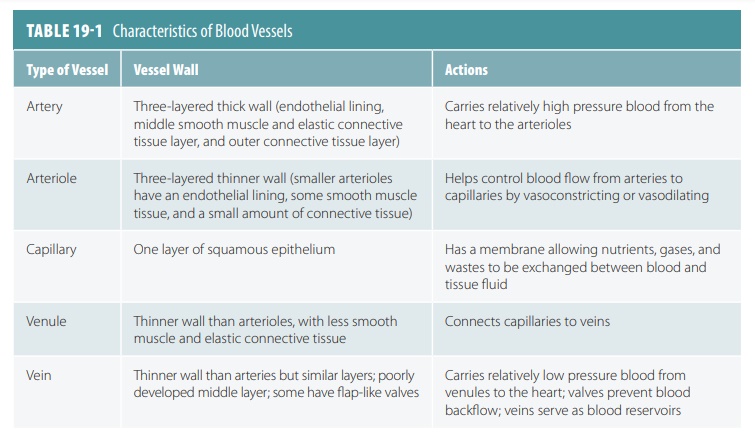
Venous Valves
The valves of veins prevent blood from flowing backward. Venous valves form from folds of the tunica
intima (FIGURE 19-6). In
appearance, they are similar to the heart’s semilunar valves and have sim-ilar functions.
More venous valves exist in the limb veins. Here, gravity opposes upward blood
flow. In the abdominal and thoracic body cavities, the veins mostly do not
contain valves. Damage to the venous valves can lead to decreased venous return
of blood to the heart.
